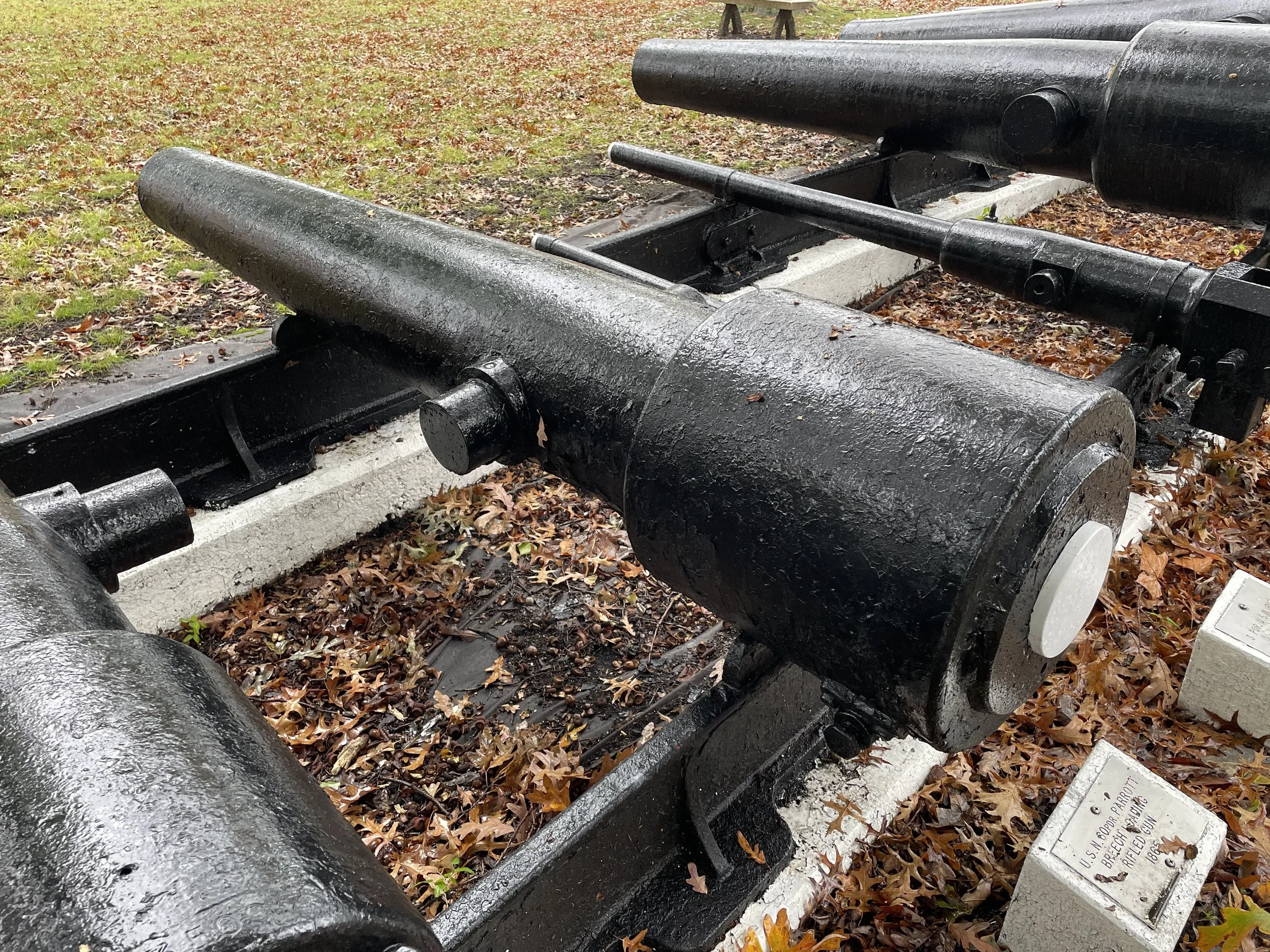
The 60-Pounder Breech Loader of USS Kearsarge
A US Navy 60-Pounder Breech Loader which served aboard USS Kearsarge from about 1880 to 1886 is displayed at Trophy Park at Norfolk Naval Shipyard in Portsmouth, Virginia. This gun was originally manufactured as a muzzle loading 60-Pounder (5.3-Inch) Parrott Rifle, Registry Number 61, at West Point Foundry in 1865.
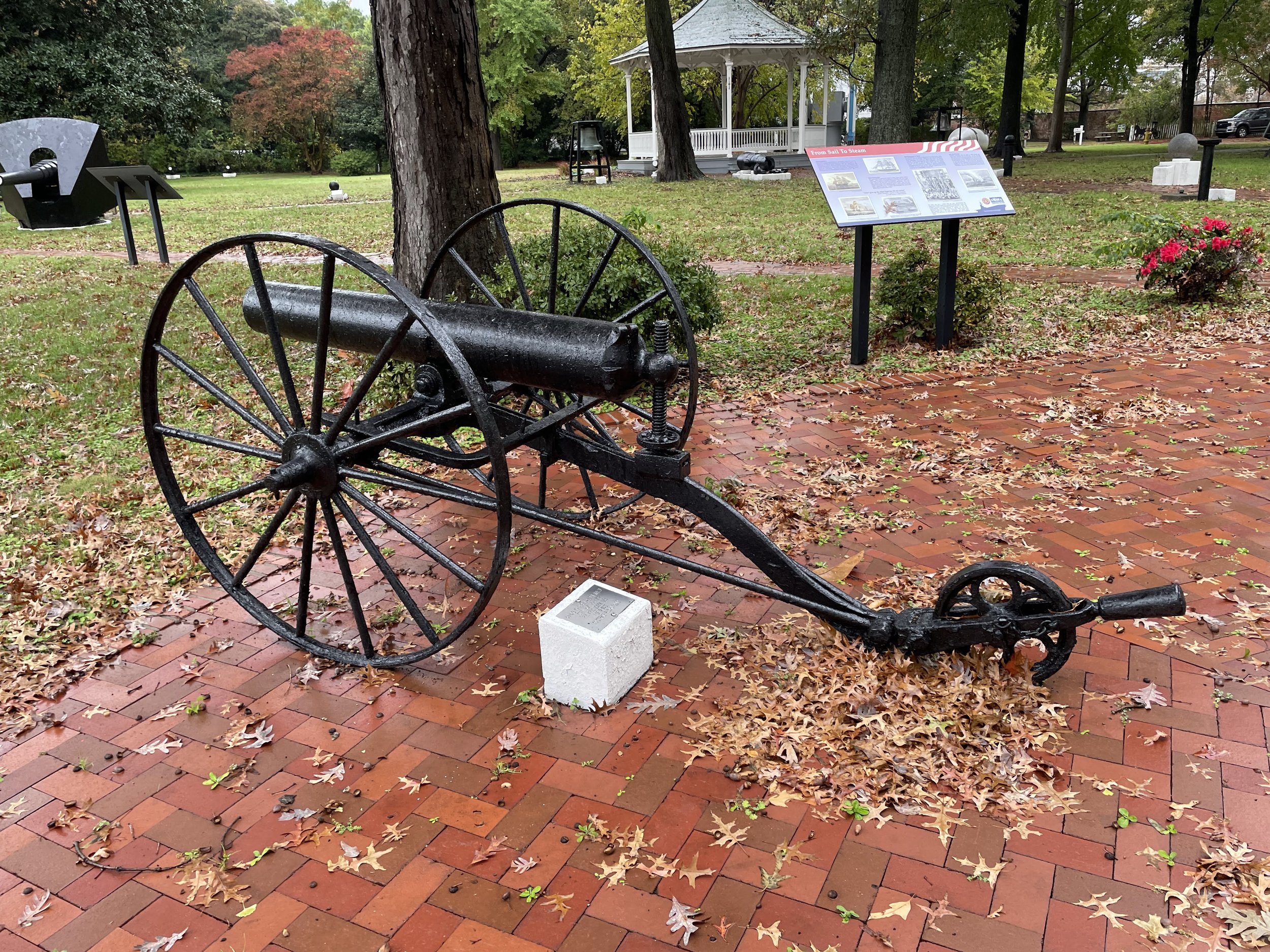
Rifled 12-Pounder Boat Howitzer (Steel) at Trophy Park
While most of Dahlgren's Boat Howitzers were made of bronze, twelve of his rifled 12-Pounder Boat Howitzers were made of steel. Three of these survive, with one, Number 298, being displayed on an original carriage at Trophy Park at Norfolk Naval Shipyard.

The Wreck of USS Huron and 9-Inch Dahlgren Number 1178
Displayed at Trophy Park at Norfolk Naval Shipyard is US Navy 9-Inch Dahlgren Number 1178. Number 1178 was cast in 1864 at Fort Pitt Foundry. It is one of the last of the type to have been manufactured. (The series of registry numbers ran to 1185.) According to the research of Wayne Stark. Number 1178 was recovered from the wreck of USS Huron.

Confederate Napoleon at Petersburg National Battlefield, Battery Five
This Confederate 12-Pounder Napoleon may be seen at Battery 5 at Petersburg National Battlefield. A copy of the registry in my possession says that Augusta Number 22 (cast in 1863) was at the battery circa 2000.
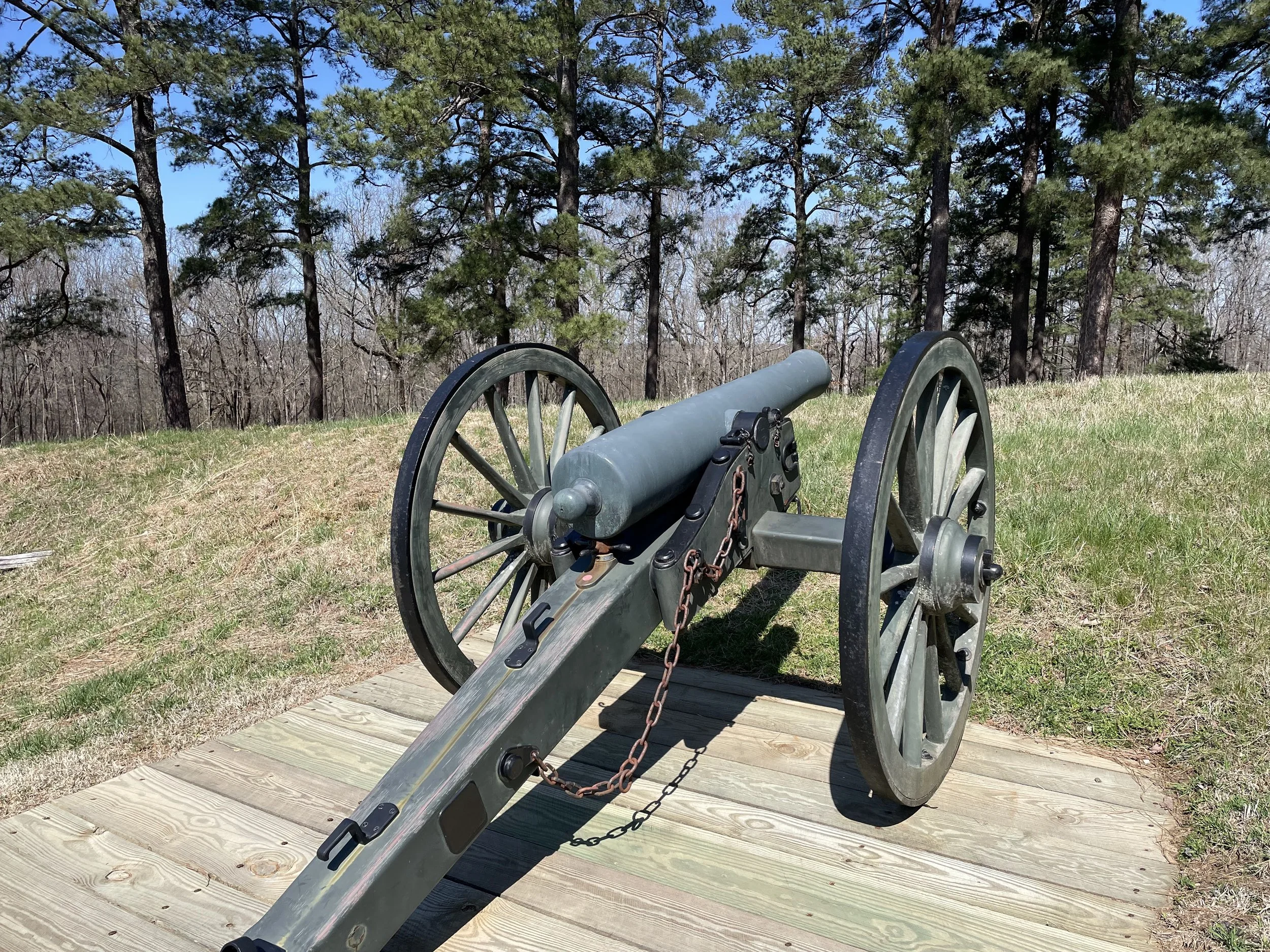
Leeds and Co. Napoleon Number 19 at Petersburg National Battlefield
Among the many interesting artillery pieces at Petersburg National Battlefield is the earliest surviving Napoleon manufactured for the Confederacy. This Napoleon made by Leeds and Company of New Orleans is displayed at Battery Number Five within walking distance of the visitors center. (It is marked with the Leeds and Co. Foundry Number 19.)
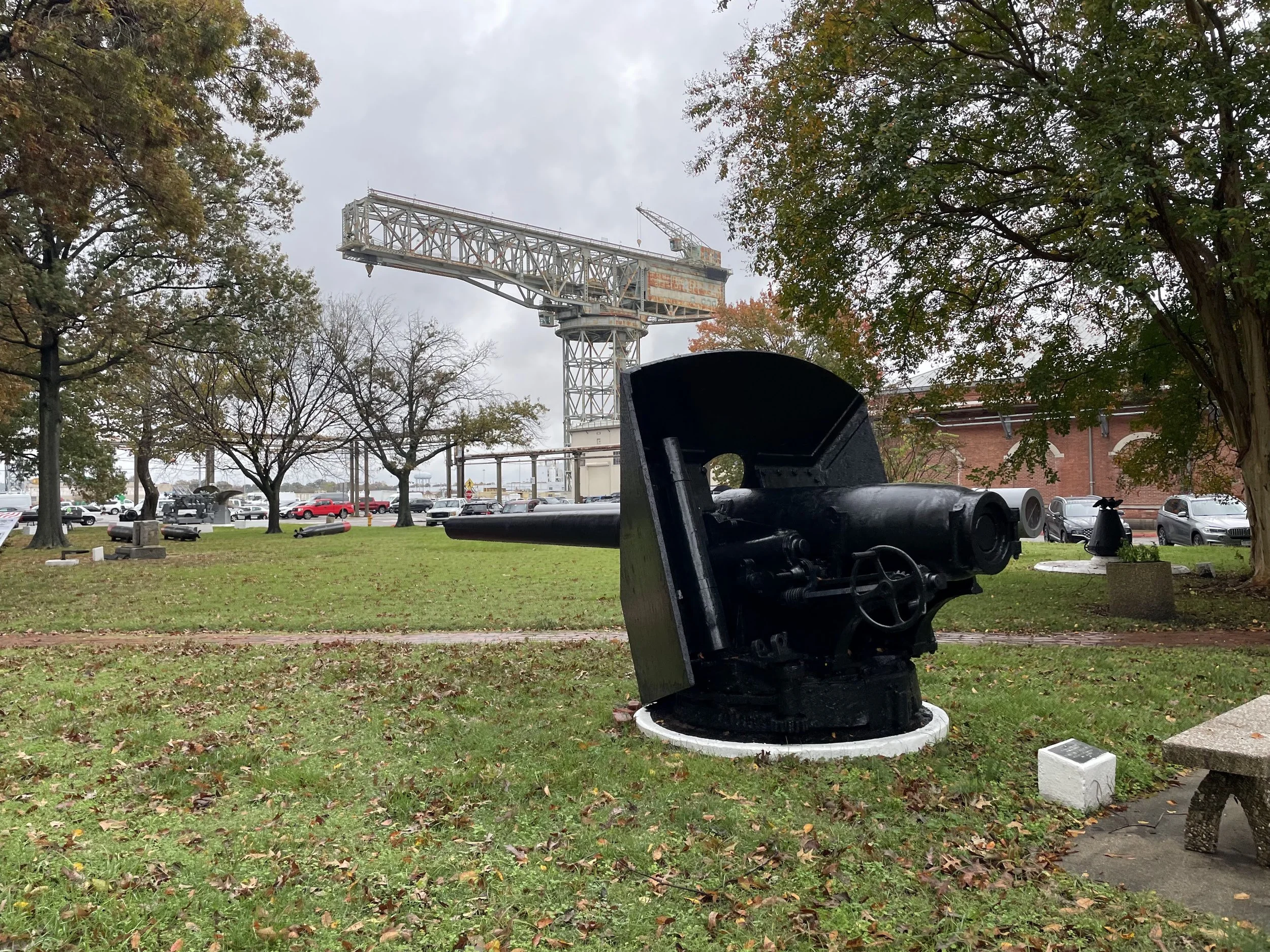
Gonzalez Hontoria de 14cm mod 1883 at Trophy Park
14cm Spanish Naval Gun (Gonzalez Hontoria de 14 cm mod 1883) which was carried aboard the Spanish cruiser Almirante Oquendo. Almirante Oquendo, was an Infanta Maria Teresa-class armored cruiser of the Spanish Navy that fought at the Battle of Santiago de Cuba during the Spanish–American War on July 3rd, 1898. This gun is displayed at Trophy Park at Norfolk Naval Shipyard.
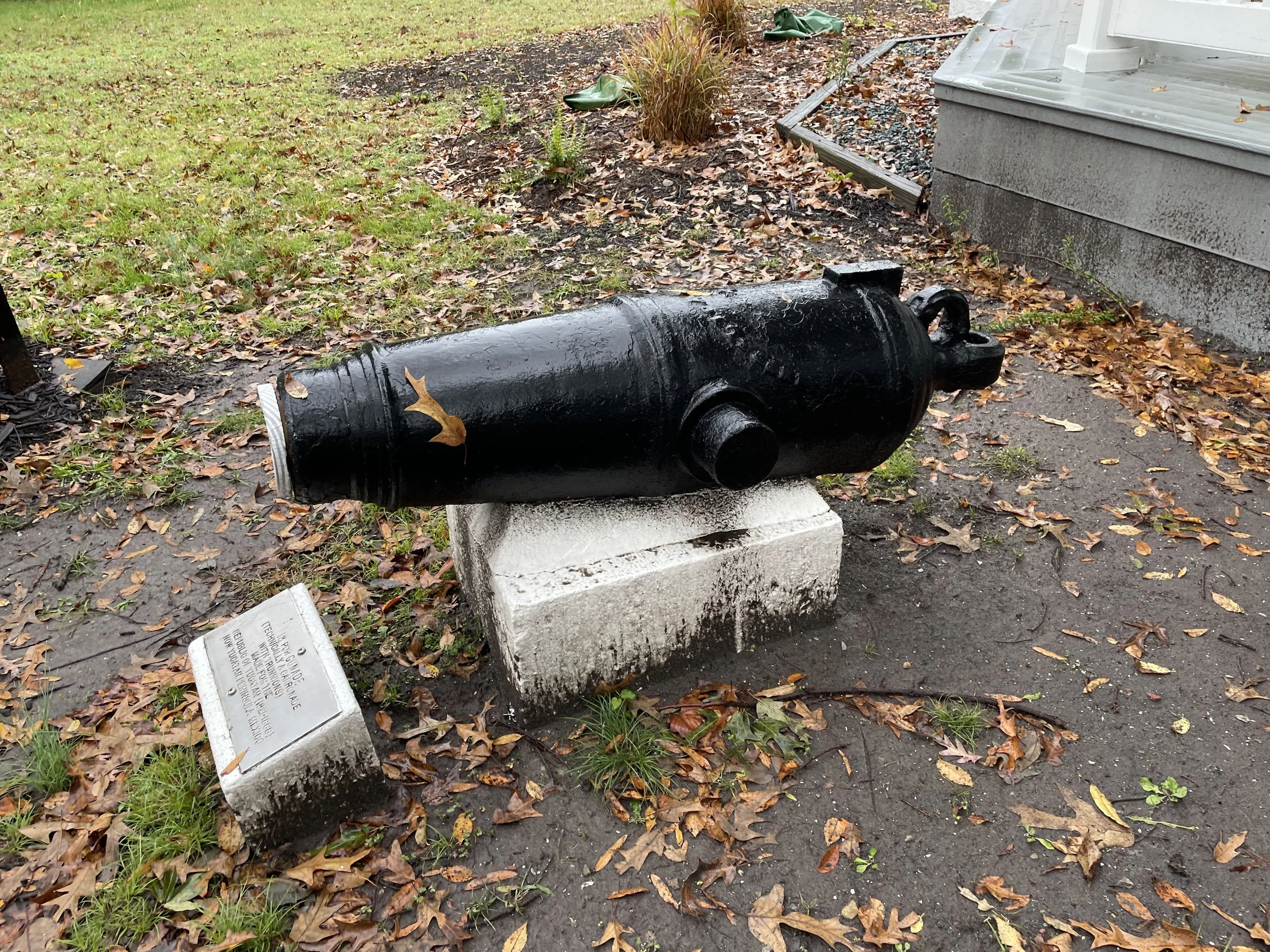
Republic of Yucatán 18-Pounder Gunade at Trophy Park
Trophy Park at Norfolk Naval Shipyard displays a mix of US Navy weaponry from throughout the Navy’s history and a handful of items captured from other nations. One of the latter is an 18-Pounder Gunade manufactured for the Republic of Yucatán. Presumably it was brought back from the Mexican American War.
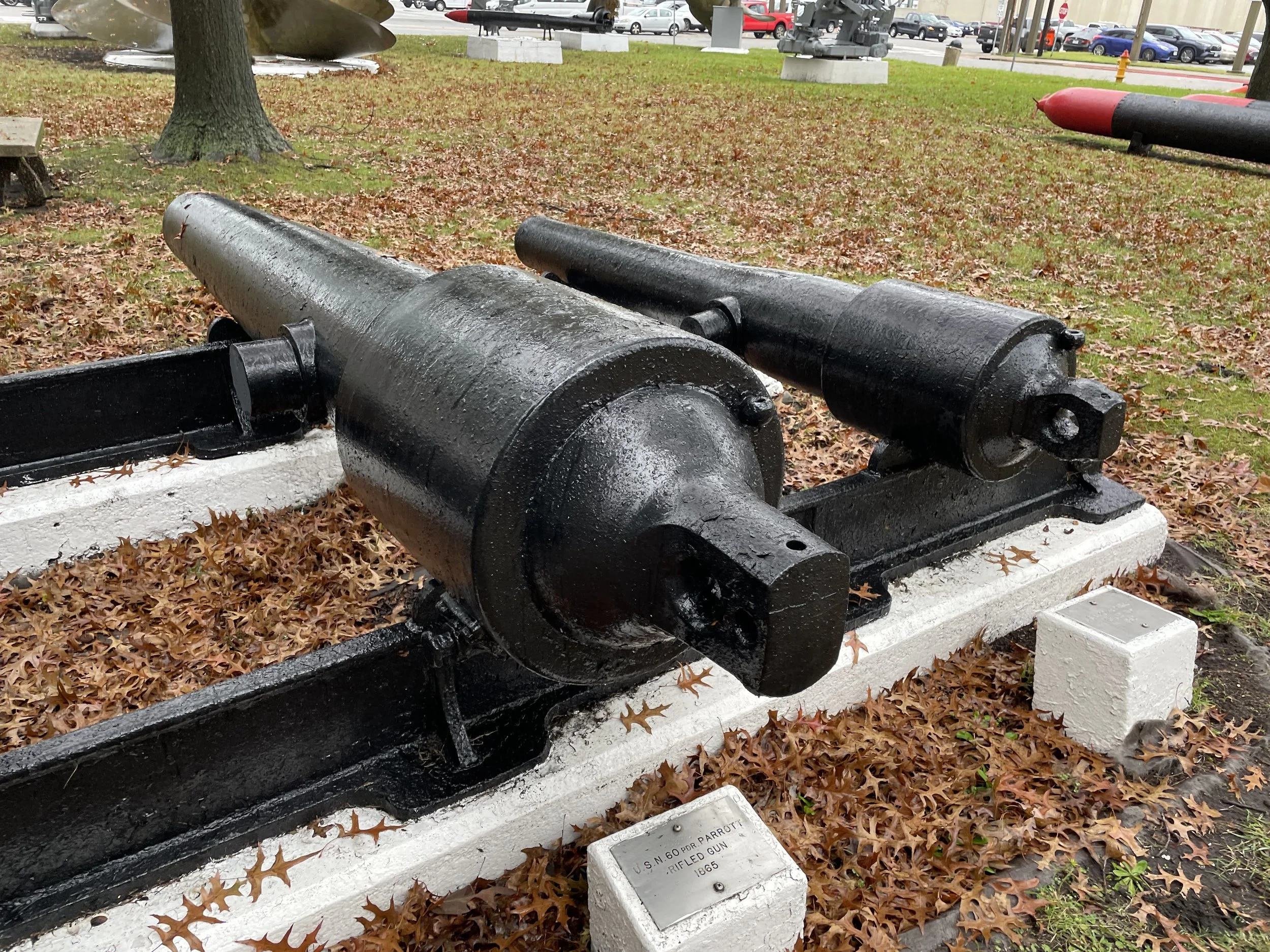
US Navy 60-Pounder Parrott Rifle at Trophy Park
A US Navy 60-Pounder (5.3-Inch) Parrott Rifle is displayed alongside other Parrotts and Dahlgrens of the Civil War era at Trophy Park at Norfolk Naval Shipyard in Portsmouth, Virginia. This 60-Pounder is Number 56. It was manufactured at West Point Foundry in 1865. As manufactured it weighed 5,430 pounds.

US Navy 32-Pounder of 32 Hundredweight of USS Pennsylvania
A US Navy 32-Pounder of 32 Hundredweight which was recovered from the wreck of USS Pennsylvania is displayed in Trophy Park in Norfolk Naval Shipyard.

US Navy 12-Pounder Dahlgren Boat Howitzer Number 36
A US Navy 12-Pounder Dahlgren Boat Howitzer (Heavy), Registry Number 36, is displayed in Trophy Park at Norfolk Naval Shipyard. It was cast in 1854 at the Washington Navy Yard. It served aboard USS Constellation from 1854 to 1866.
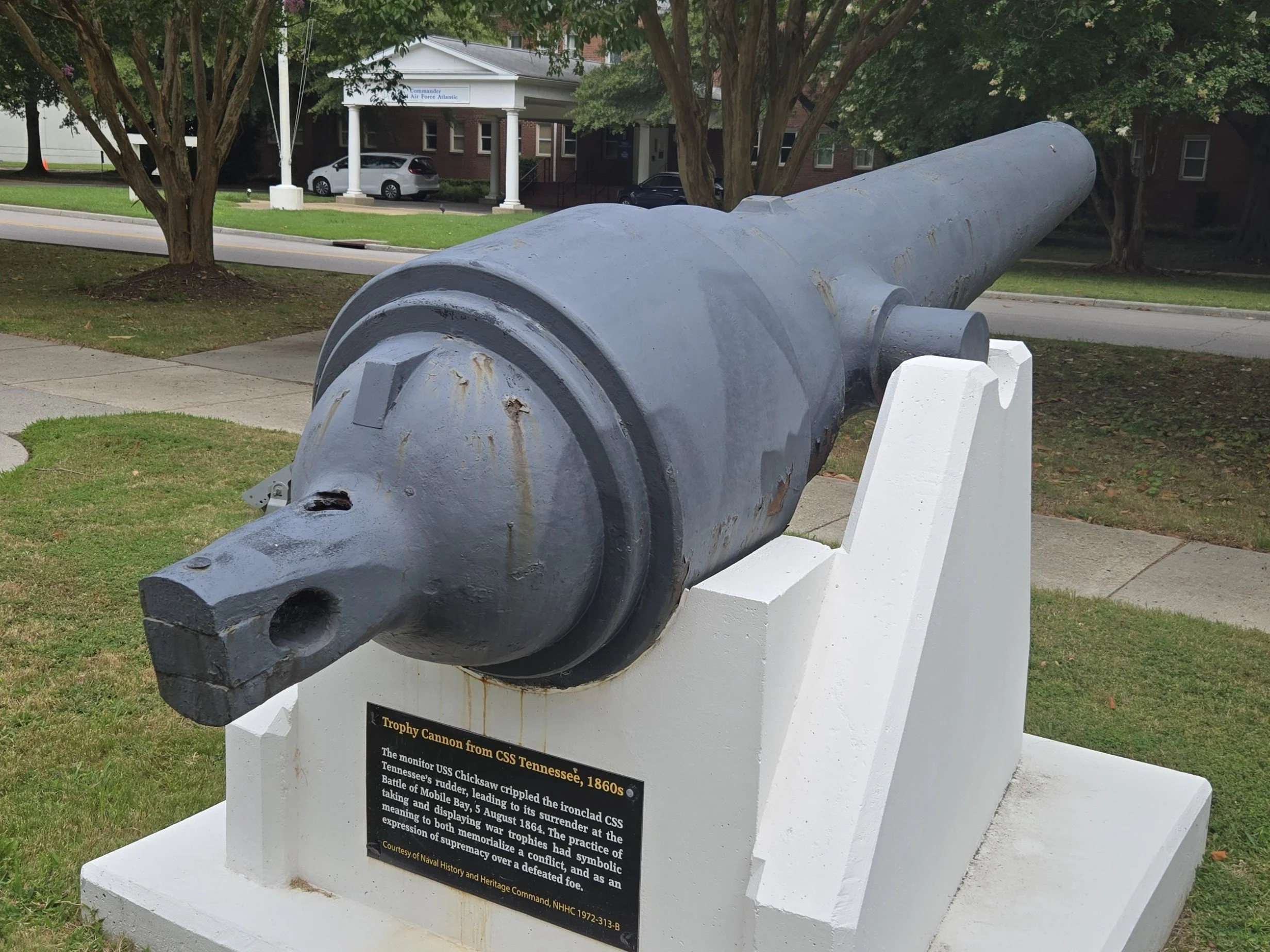
The 6.4-Inch Brooke of CSS Tennessee at Naval Station Norfolk
A 6.4-Inch Brooke Rifle which was captured aboard CSS Tennessee is displayed at Naval Station Norfolk alongside an identical 6.4-Inch Brooke from CSS Albemarle.
The Tennessee Brooke was manufactured at Tredegar in June 1863 and was sent to Richmond Naval Ordnance Words for banding and rifling in August of 1863. Its registry number is 49 and its Tredegar Foundry Number is 1853 (Olmstead et al. pg. 219).
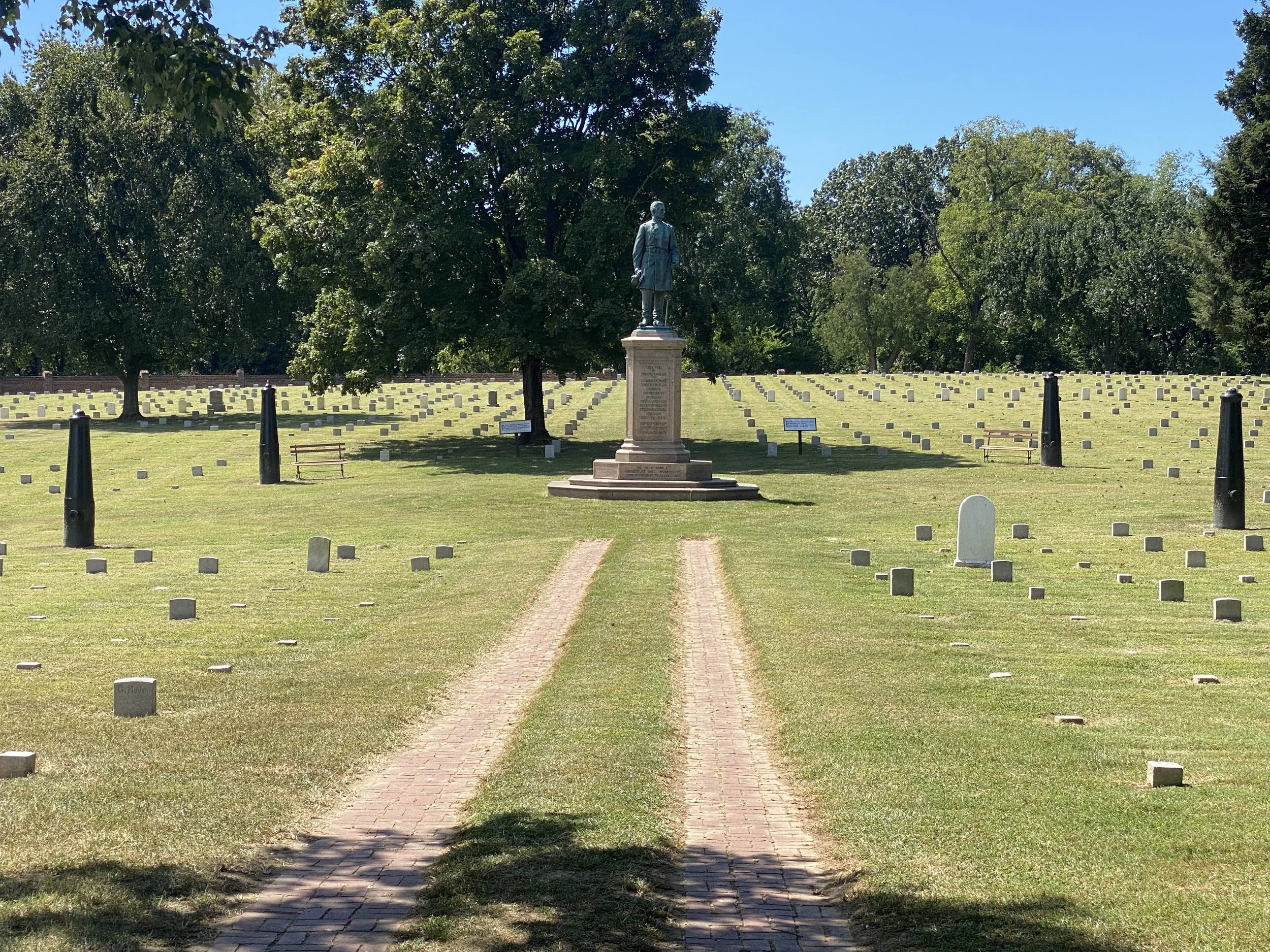
The 32-Pounders at Fredericksburg National Cemetery
Four US Army 32-Pounders, Pattern 1829, surround a monument at Fredericksburg National Cemetery to the Division of General Andrew Humphreys, V Corps, Army of the Potomac. Humphrey’s division participated in the attack on Confederate positions on Marye's Heights on December 13th, 1862, suffering heavy casualties in the engagement.
The four cannons were emplaced at the cemetery in 1868.
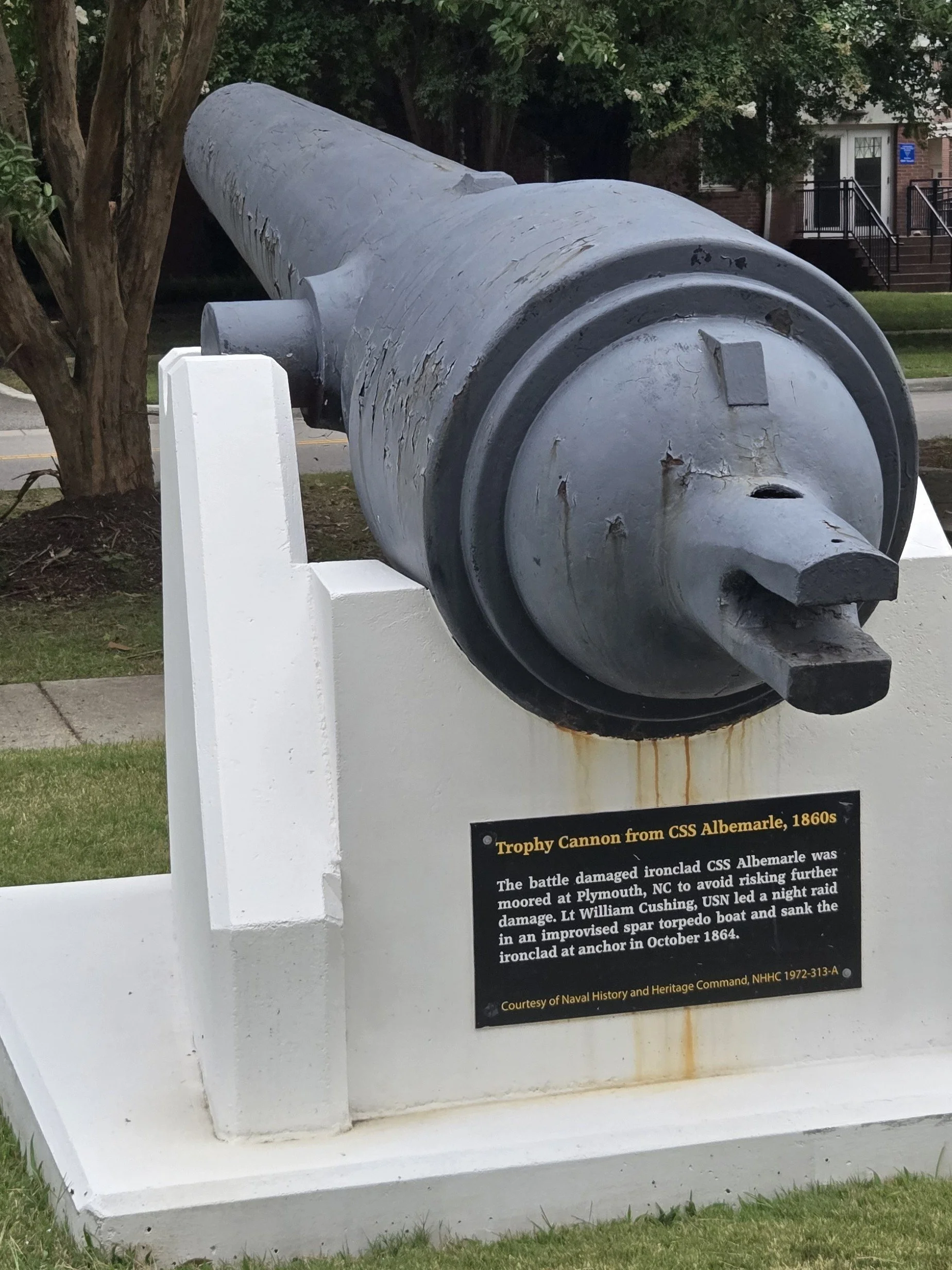
The 6.4-Inch Brooke of CSS Albemarle at Norfolk
A 6.4-Inch Brooke Rifle carried aboard CSS Albemarle is displayed at Naval Station Norfolk flanking a flagpole with another 6.4-Inch Brooke which was carried aboard CSS Tennessee. This Brooke likely was carried by CSS Albemarle during the Battle of Plymouth and Battle of Albemarle Sound in 1864.
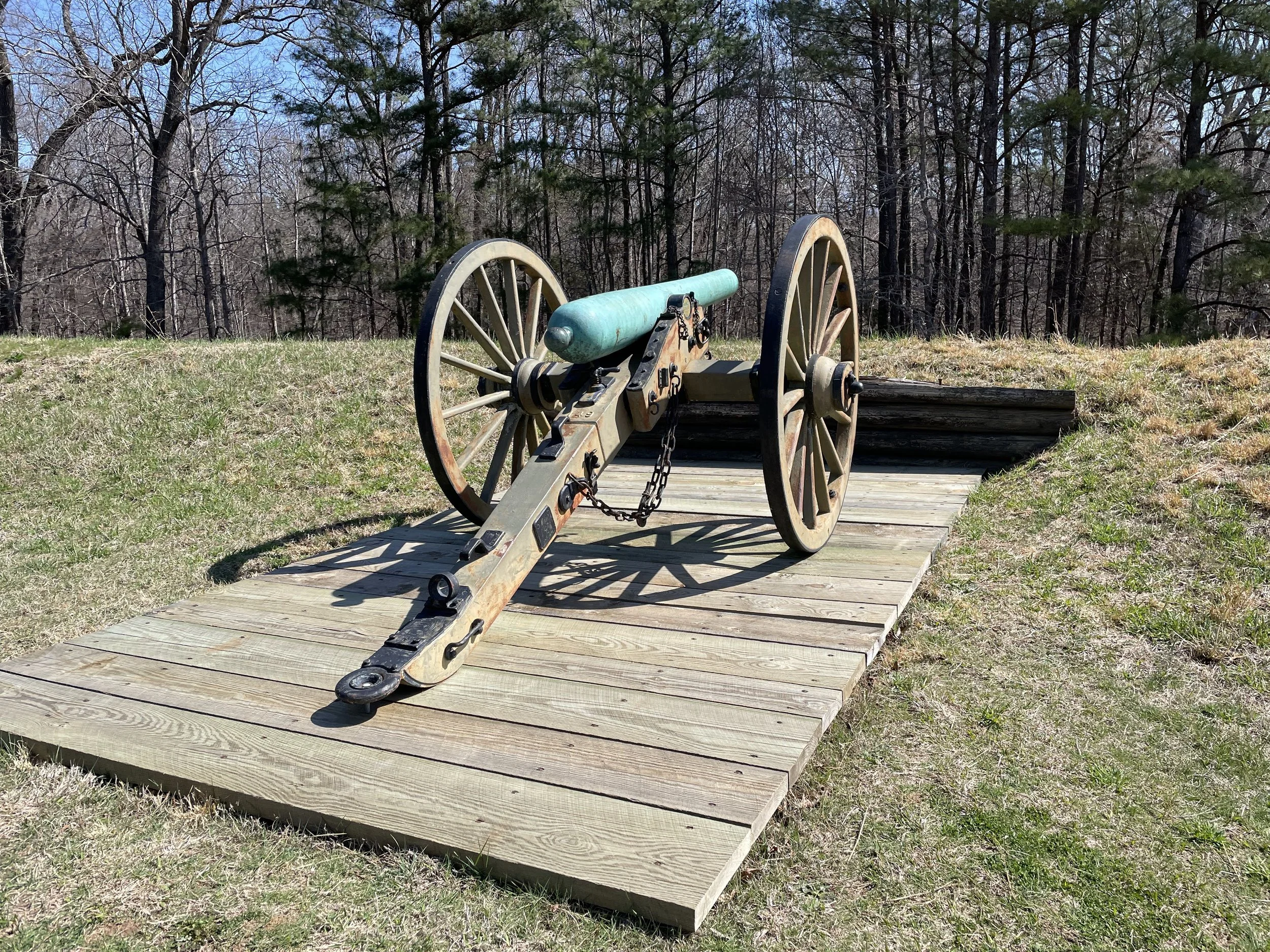
Brierfield Arsenal 6-Pounder at Petersburg
A 6-Pounder smoothbore manufactured by Brierfield Arsenal in Alabama (near Selma) in 1863 is displayed at Petersburg National Battlefield. This is the only surviving cannon produced by Brierfield. A large "C.S." is visible on top of the tube above the trunnions. The weight, 982 pounds, is stamped on the muzzle.
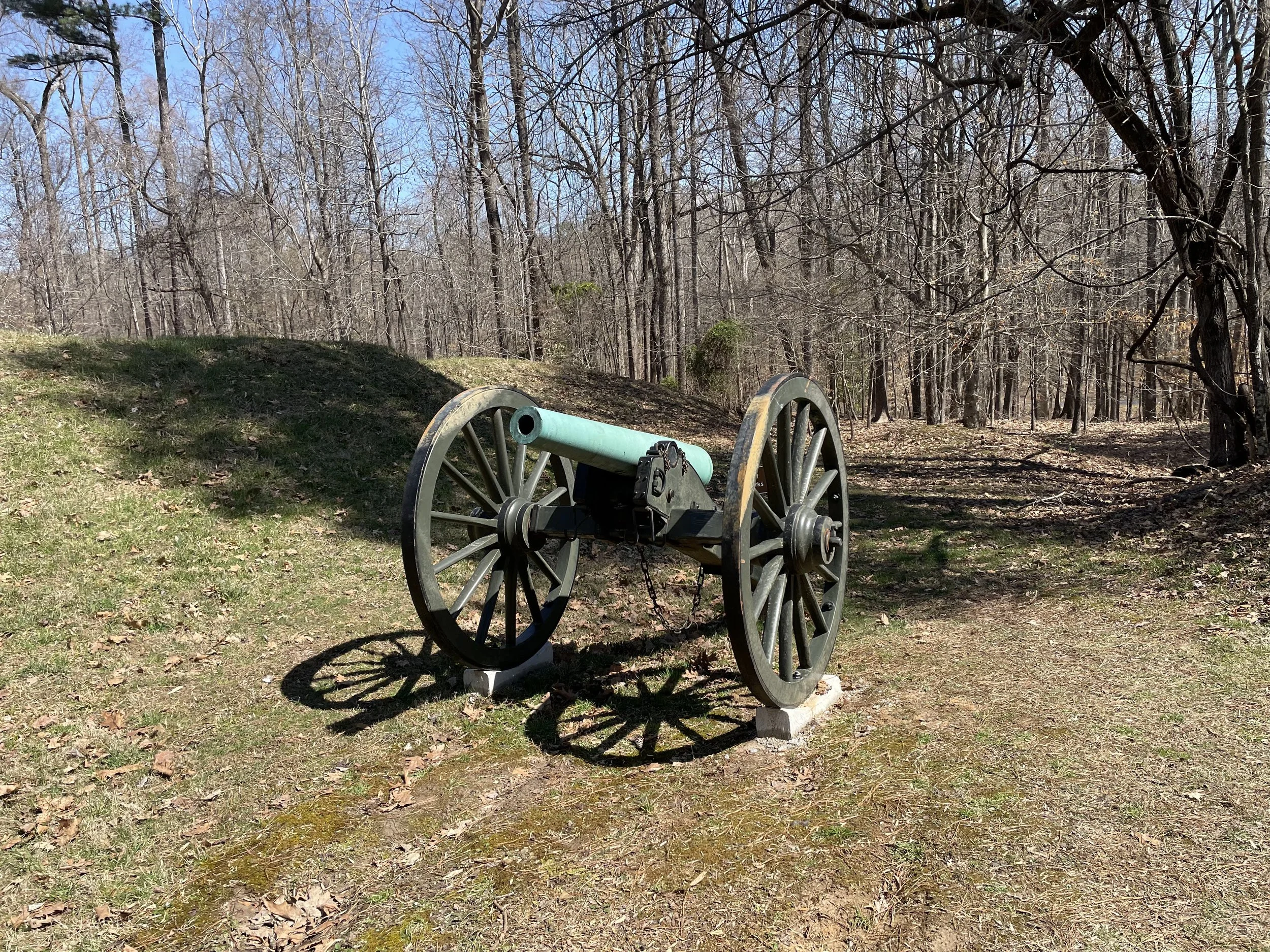
3-Inch Quimby and Robinson Rifles at Petersburg
A Quimby and Robinson 3-Inch Bronze Rifle is seen at Battery 8 at Petersburg. Quimby and Robinson of Memphis, Tennessee delivered at least 77 field pieces and siege guns to the Confederacy between November 1861 and the fall of Memphis to the US Navy in June 1862. Four of these were 3-Inch Bronze Rifles. Two of these are displayed at Petersburg.

The 8-Inch Confederate Columbiad at Drewry’s Bluff
An 8-Inch Confederate Columbiad is displayed at Fort Darling at Drewry's Bluff on the James River near Richmond, Virginia. The Columbiad, Number 66, was cast at Bellona Foundry in 1862. The Columbiad, mounted on the commanding position overlooking the James, represents the battery which fought USS Galena and USS Monitor on May 15th, 1862.
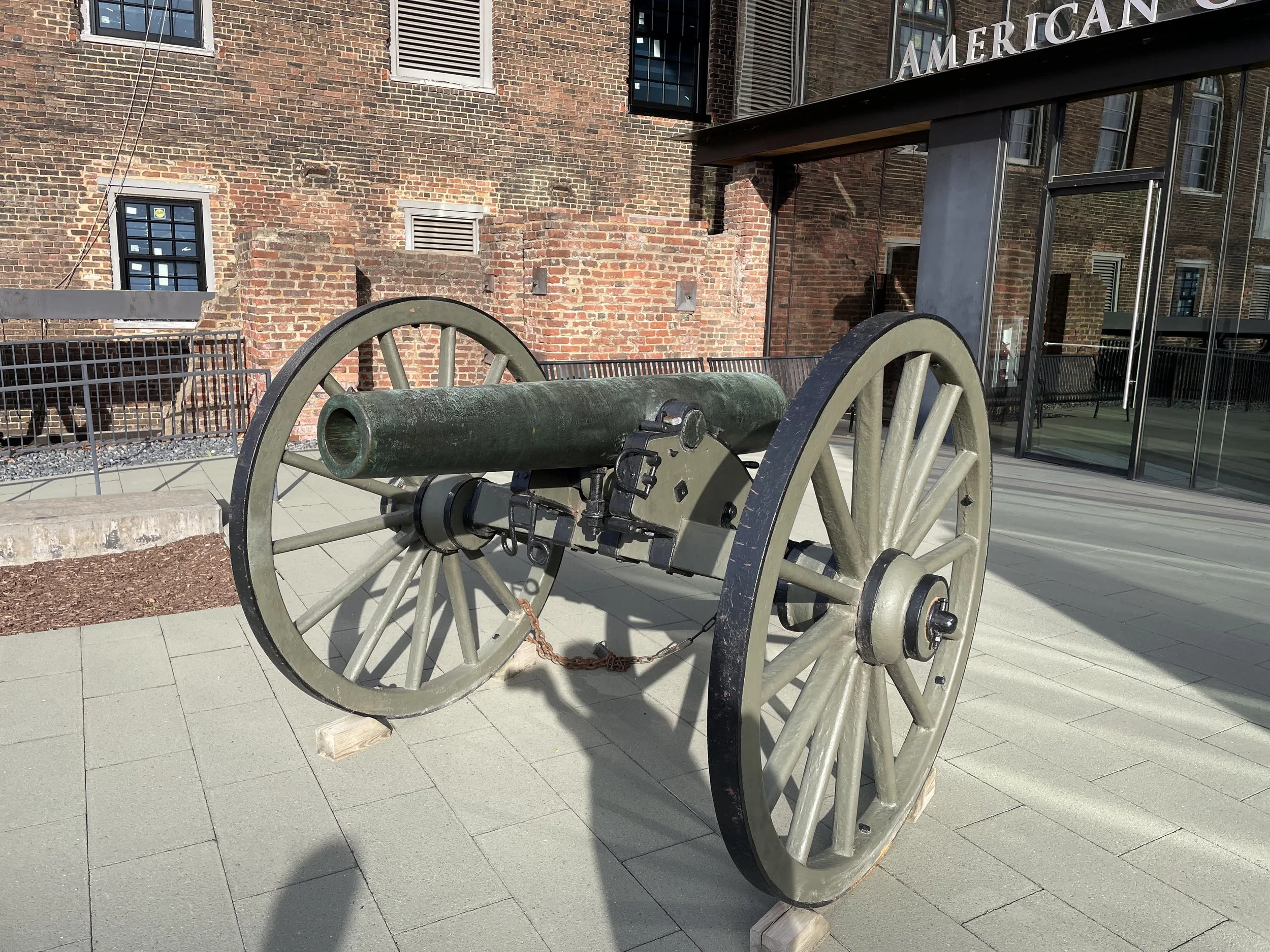
12-Pounder Confederate Napoleon at the American Civil War Museum in Richmond
A 12-Pounder Confederate Napoleon is displayed in front of the American Civil War Museum in Richmond, Virginia. The “Confederate Napoleon”, a bronze smoothbore gun-howitzer, is designed to fire the same shot, shell, canister, and case as the US Army 12-Pounder Napoleon (Pattern 1857). However, given the pressures on Southern industry, most Confederate Napoleons lack the the visual refinements of the US Army model. The Confederate Napoleon typically does not have any muzzle swell. The tube likely was turned on a lathe only enough to function, so it will have a rough appearance. This particular example was cast at Tredegar Foundry - the site of the museum where it is presently displayed.
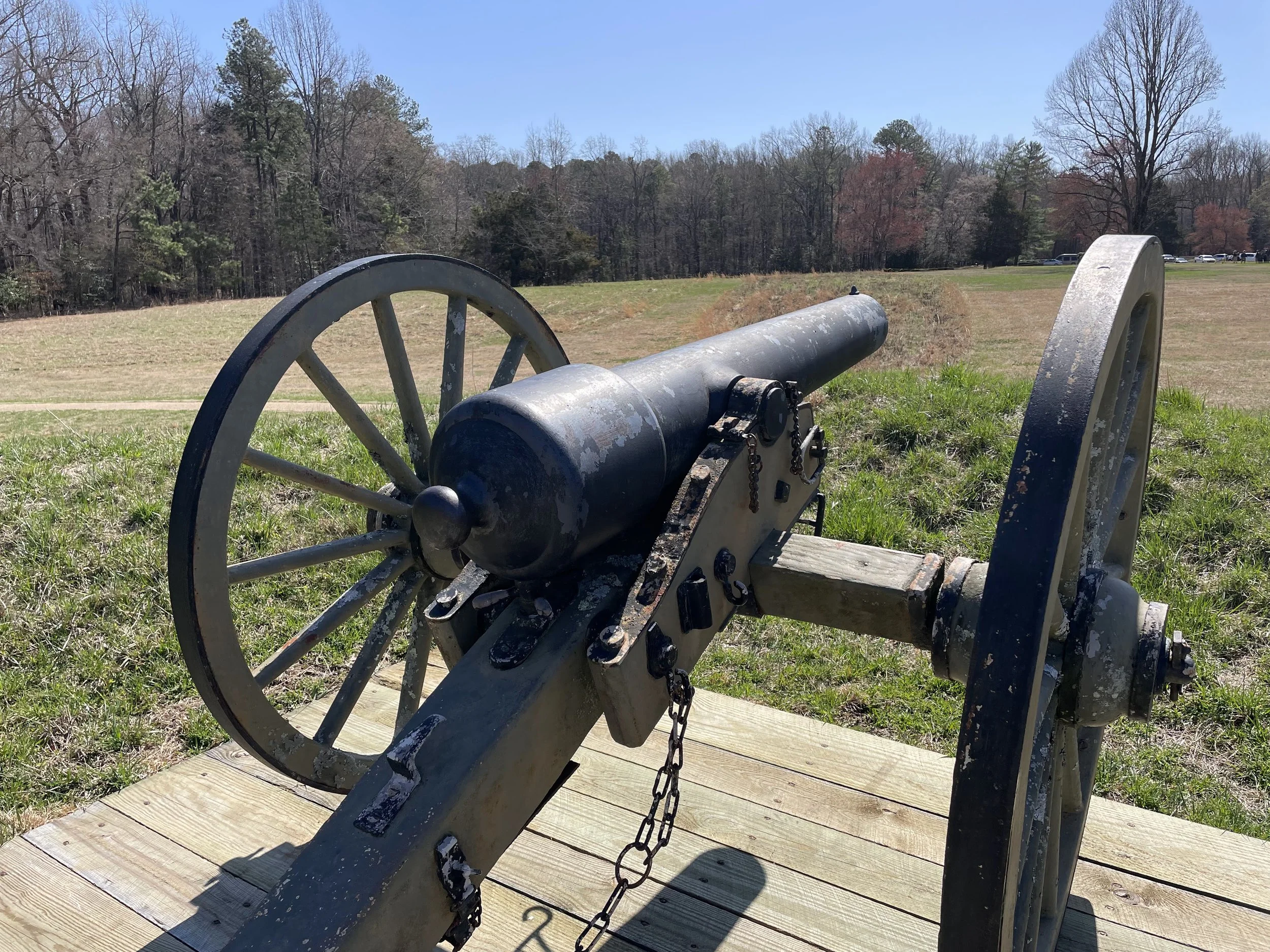
12-Pounder Confederate “Iron Napoleon” at Petersburg
12-Pounder Banded Smoothbore "Confederate Iron Napoleon" at Petersburg National Battlefield, Battery 5. Tredegar's foundry number 2243 is visible on the left trunnion. This piece was cast in January of 1865. As bronze became scare, the Confederacy turned to manufacturing the "Napoleon" in iron. Weight of the tube, 1,249 pounds, is similar to earlier bronze examples.

Early US Army Napoleons at Petersburg National Battlefield
Two early examples of US Army 12-Pounder "Napoleons" are displayed at Petersburg National Battlefield. Having handles above their trunnions, they are among the first examples of the 12-Pounder, Light, Pattern 1857 manufactured for the US Army.
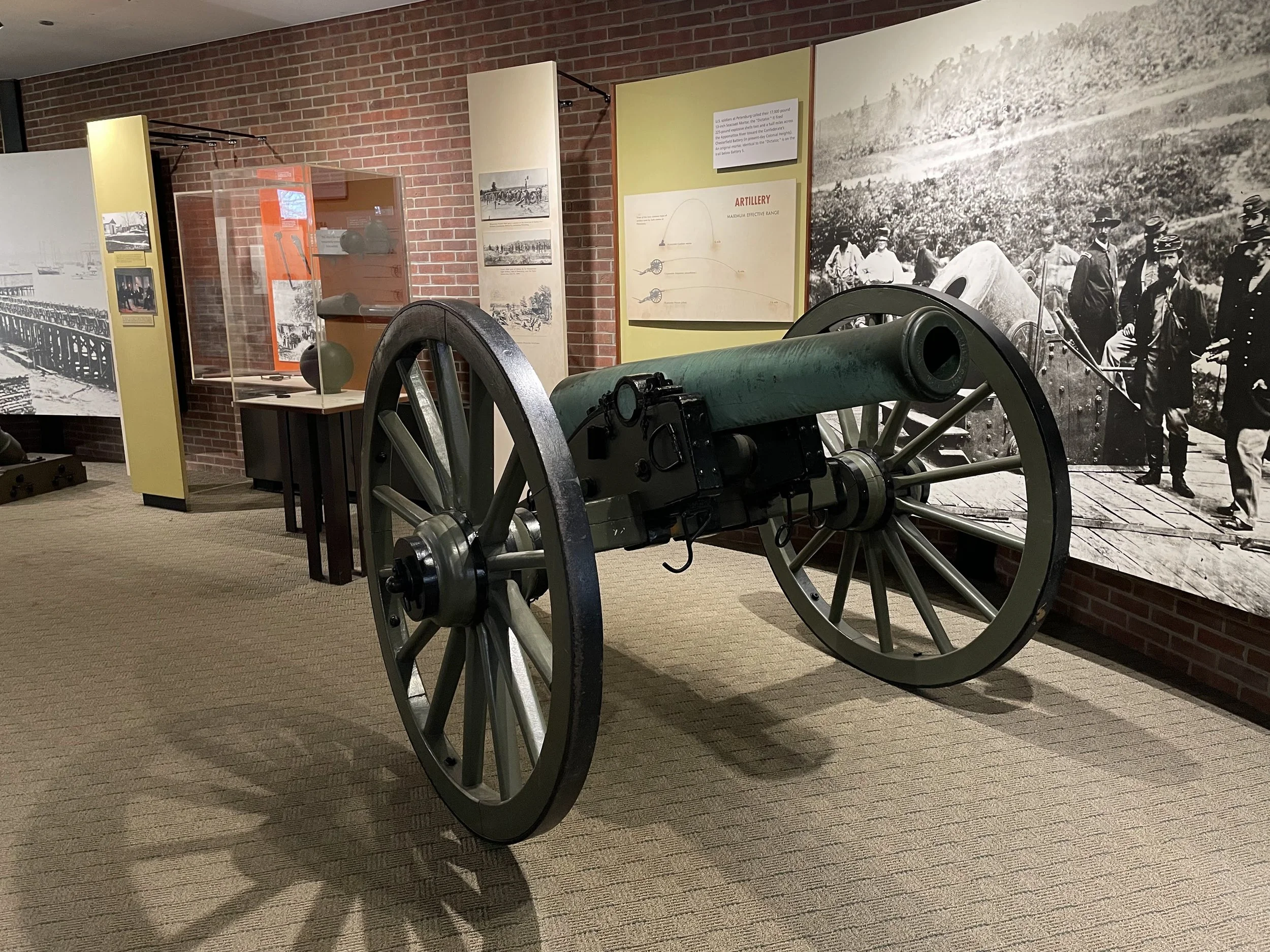
12-Pounder Napoleon, Revere Copper Company Number 253, at Petersburg
This Revere Copper Company 12-Pounder Napoleon, Number 253, in the visitor center at Petersburg National Battlefield bears a placard which states: "This 12-Pounder bronze Napoleon tube was captured by the Confederates during the Battle of Reams Station, August 25th, 1864.